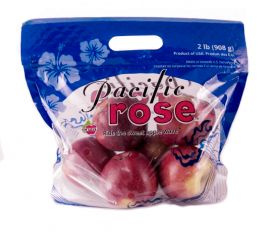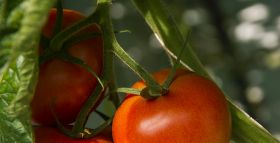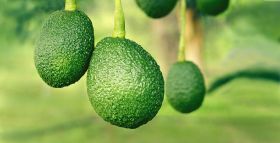
Following its recent corporate rebranding and the arrival of a new shareholder, Irish fresh fruit and vegetable giant Total Produce, Vancouver-based importer Oppy has continued to adjust its range of imported and homegrown product to suit the needs of a broad customer base, introducing new lines and forging new links with growers. In this two-part interview, Oppy's president, chairman and chief executive John Anderson talks exclusively to americafruit about sales growth in the produce department, category management and the star products to watch out for during the next couple of years.
What were the stand-out developments over the past year in the North American market for imported fresh fruit and vegetables?
John Anderson: A few key events signalled changes in the import landscape in North America over the last 12 months. Earlier in the year, the break-up of the Australian citrus industry's single-desk marketing structure created excitement and opportunities for this growing category. Meanwhile, modifications to the Mexican tomato suspension agreement have growers and retailers anticipating a smoothing-out of pricing between US-grown and Mexican-grown product.
Freezes in Chile last September are creating supply challenges across the industry in several categories. North America will feel the effects of this in the coming months. The more recent cold weather in California has profoundly impacted the citrus industry; the anticipated scarcity could open the door for promotions on imported items down the road.

What produce categories have performed particularly well during those 12 months? How do you explain this?
JA: Produce in general saw 4-5 per cent growth last year – up from the 1-2 per cent we saw a year earlier. This is exciting progress, driven in part by improving economic conditions and the popularity of high-value items like berries, cherries, avocados and premium apples. Greenhouse peppers, cucumbers and tomatoes also continue to perform well.
The apple category continues to evolve with newer varietals going mainstream. Jazz apples were a relative unknown a decade or so ago, but now are routinely listed as a top-ten selling apple at US retail. Pacific Rose, another of our proprietary varieties, is performing beautifully. Demand for Envy, another Braeburn-Royal Gala cross, has also been quite intense this season.
Promotions play a big part in category performance, of course. Where we see our retail partners draw up programmes and execute in our categories, we definitely see a significant lift.
Were there any produce categories that didn't perform as well as expected in 2013? If so, why do you think this was?
JA: Kiwifruit continues to be a challenged category; supplies to North America were down from both New Zealand and Chile last year.
Have you introduced any new products, packaging, marketing concepts or services over the past 12 months?
JA: A few Oppy highlights from 2013 include the re-introduction of key items like year-round, greenhouse-grown cucumbers and a full range of greenhouse organic, coloured, sweet bell peppers from Canada. In recent years, our Canadian organic pepper programme had consisted of red peppers only.

While not an imported item, we brought vine-ripened Roma tomatoes to the market for the first time last year. In 2012, we began a grower partnership with California tomato producer Oceanside Pole, selling their popular vine-ripes. We added the Oceanside Pole Romas to the mix, a move that was well met by our customers due to the high quality of the product and the convenience of loading both round and Roma tomatoes in the same location.
With respect to packaging, two things come to mind. We introduced two-pound, pouch-style bags for Envy, Pacific Rose and Jazz apples. While this pack style has been around in the industry for a while, ours are designed as an attractive, ready-to-retail family of packaging for premium apples, and can be displayed on co-ordinated shipper units at retail.
We also proudly introduced the Oppy trade brand of packaging, which debuted last autumn on Peruvian blueberries.
In general, how would you describe the market for imported fruit and vegetables in both the US and Canada? What specific trends has Oppy noted and what impact have these had on your commercial operations?
JA: While the 'buy local' movement continues to grow strong in many regions of the US and Canada, the important role of imported produce is clear: over 50 per cent of the fruit consumed in the US is imported and in Canada it is probably higher than that. Most of today's shoppers are of the generations who expect supermarkets to stock their fruit of choice all year round ― we haven't known it any differently. In recent years, certain categories like easy-peel citrus and berries have become habitual for consumers and remain popular regardless of the season.

At Oppy, we are monitoring the trends and refining our product mix accordingly. We're also working with our grower partners to anticipate what's next in terms of consumer preferences and needs, and supporting new variety trials to address those opportunities.
Looking ahead, can you identify particular items of imported produce that you regard as highly promising prospects for the future in North America?
JA: The growth in avocados and berries is impressive, and we are expecting continued momentum. Also, the consumers' healthy appetite for intensely flavoured, crunchy apples opens the door for the new and exciting varieties our grower partners have in the wings.



